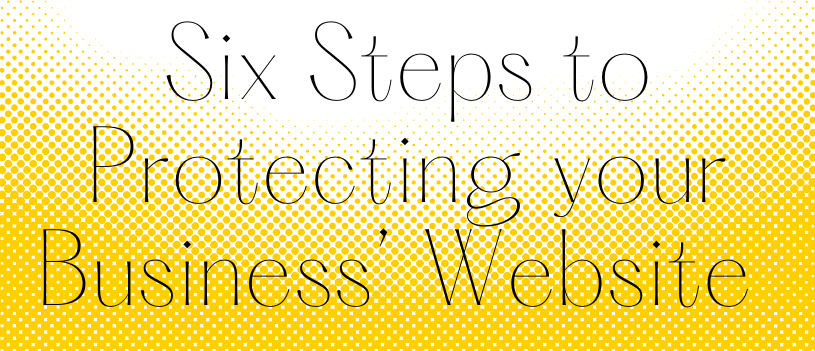As a small business owner, you are confronted with unexpected challenges and cyber security is no exception. It is important to keep your business secure online. In order to do this, you must analyze your risk to find the right tool to help reduce the chances of an attack.
Although you may understand it is important to protect yourself from hackers, it can be difficult to understand how vulnerable you are online or what solutions you need to protect your website. However, if you follow these six simple steps, you will be able to protect your business and improve your website’s security.
1. Update your software.
This is a relatively simple step because most website builders take care of the software updates for you. However, if you are using a platform without automatic updates, you will be responsible for running them when needed. If you do not update your software, this can expose you to website bugs, viruses, and malicious code from hacker attacks.
2. Use strong passwords.
The only things standing in the way between your business’ information and a hacker are your website credentials. This is why it is important to take the time to create a strong password. Remember, a security breach can take between hours to days to fix, however, a strong password only takes a short time to create.
When creating a password, ensure it is at least 10 characters with a mix of uppercase and lowercase letters, numbers and special characters. Try to avoid using personal identifiable information in your password. If you make the password more challenging, it will be harder for a hacker to break.
3. Encrypt with SSL.
Have you noticed the padlock icon in your address bar? SSL (Secure Sockets Layer) certificates is the “S” in “HTTPS” and creates the padlock icon. Business owners should consider adding an SSL certificate to their website as it can be crucial if you are taking credit card payments, sending data, or requesting passwords. SSL provides the safe transmission of sensitive information and steers hackers away from being able to gain access to your information and login credentials.
4. Choose a secure host.
Choosing a website host is a very big decision as it can be critical to the security of your business. It is important to select one committed to keeping your website safe and is aware of various cyber risks.
Most high-quality website builders now offer a free SSL with their plans so this will also save you money. Your host may also be able to back up your data to a distant server, which will make it a simple process to restore your information if you were to be hacked. It is also crucial that you pick a host that provides ongoing technical help when it is needed.
5. Back up data.
If you were to lose your data it could definitely cost a considerable amount of time and money. It is unfortunate to lose your own data, but even worse if you were to lose your customers’. As previously stated, most hosts will backup information on their servers, but it is important that you also back up your own files periodically. A backup should include your files, content, media and databases that are a part of your website.
6. Assess your weaknesses
Lastly, it is essential that you are identifying and fixing any potential website or server vulnerabilities. You should routinely conduct security scans of your website after you have made any changes to your content. Thankfully, there are many tools available to help ensure that your website is secure.
Please note you do not have to have a technical background to properly secure your website. By following these six steps, you will be able to reduce your risk of being hacked and will save your business time as well as money. However, if you do not feel you can add these steps to your plate as a business owner, you can always partner with a security agency to assist you with these tasks. Security companies can definitely help give you a peace of mind as you will know your website and business’ security is in good hands.
